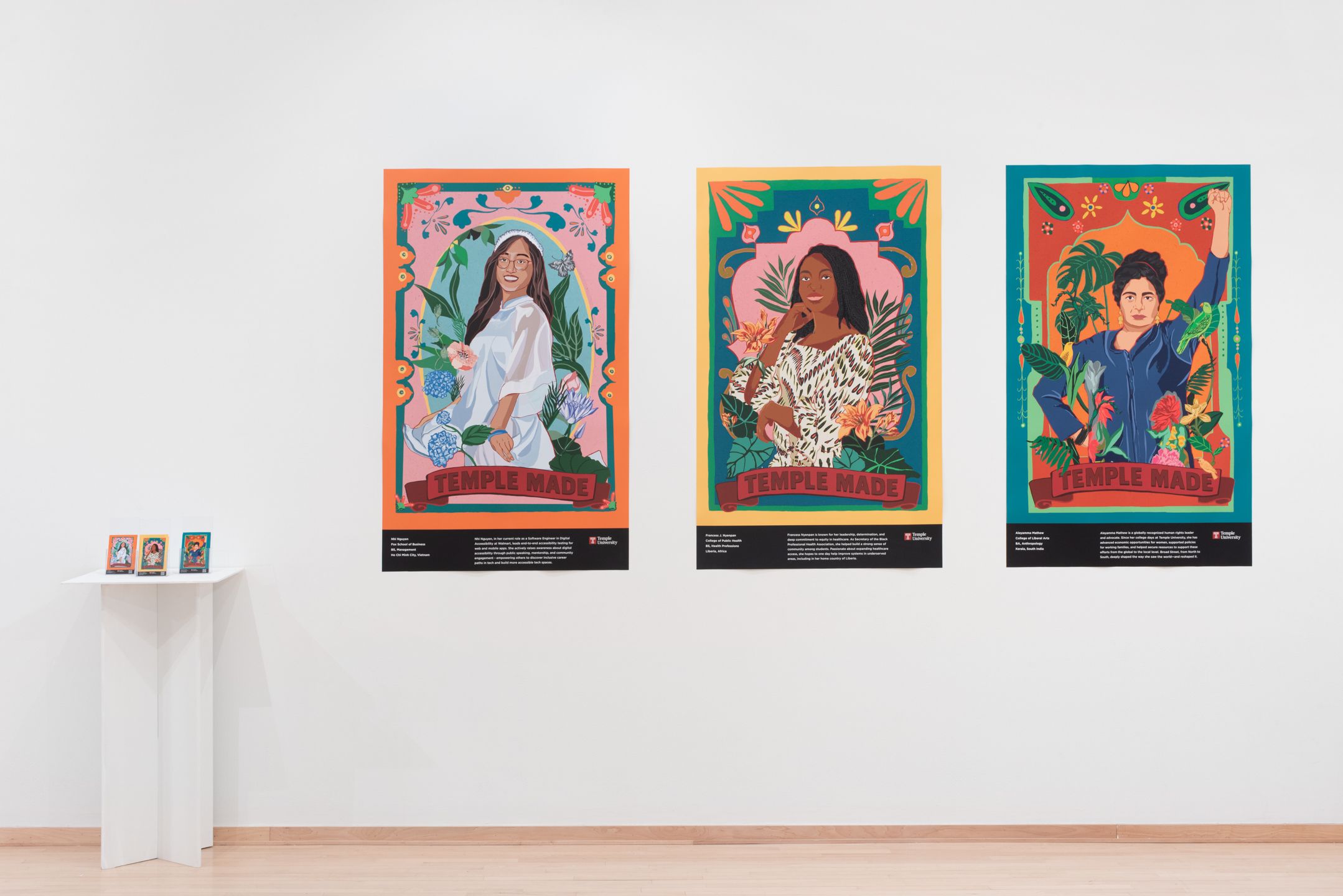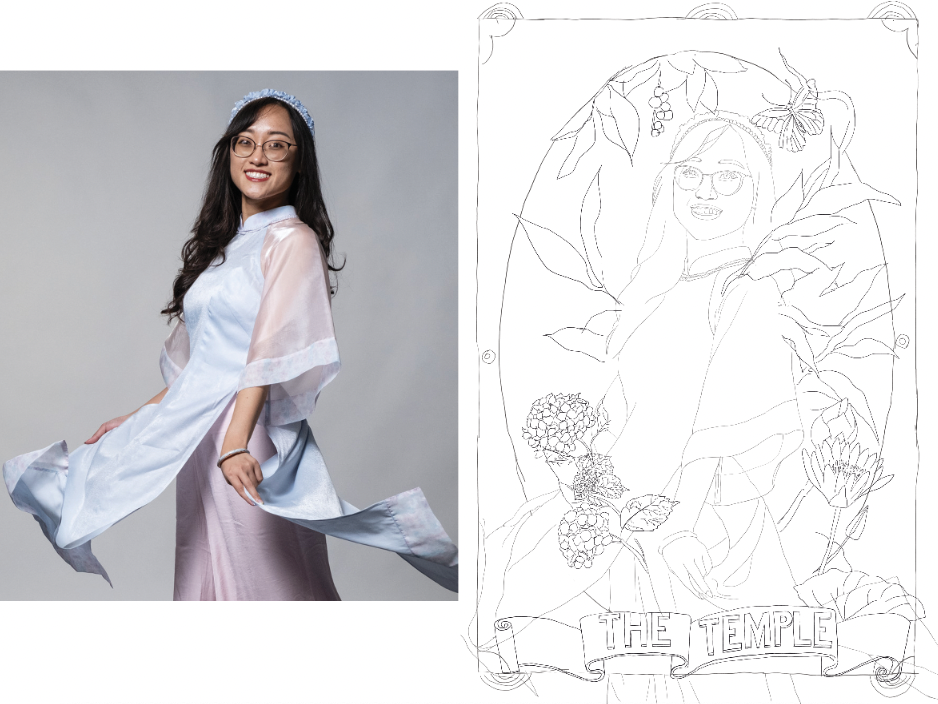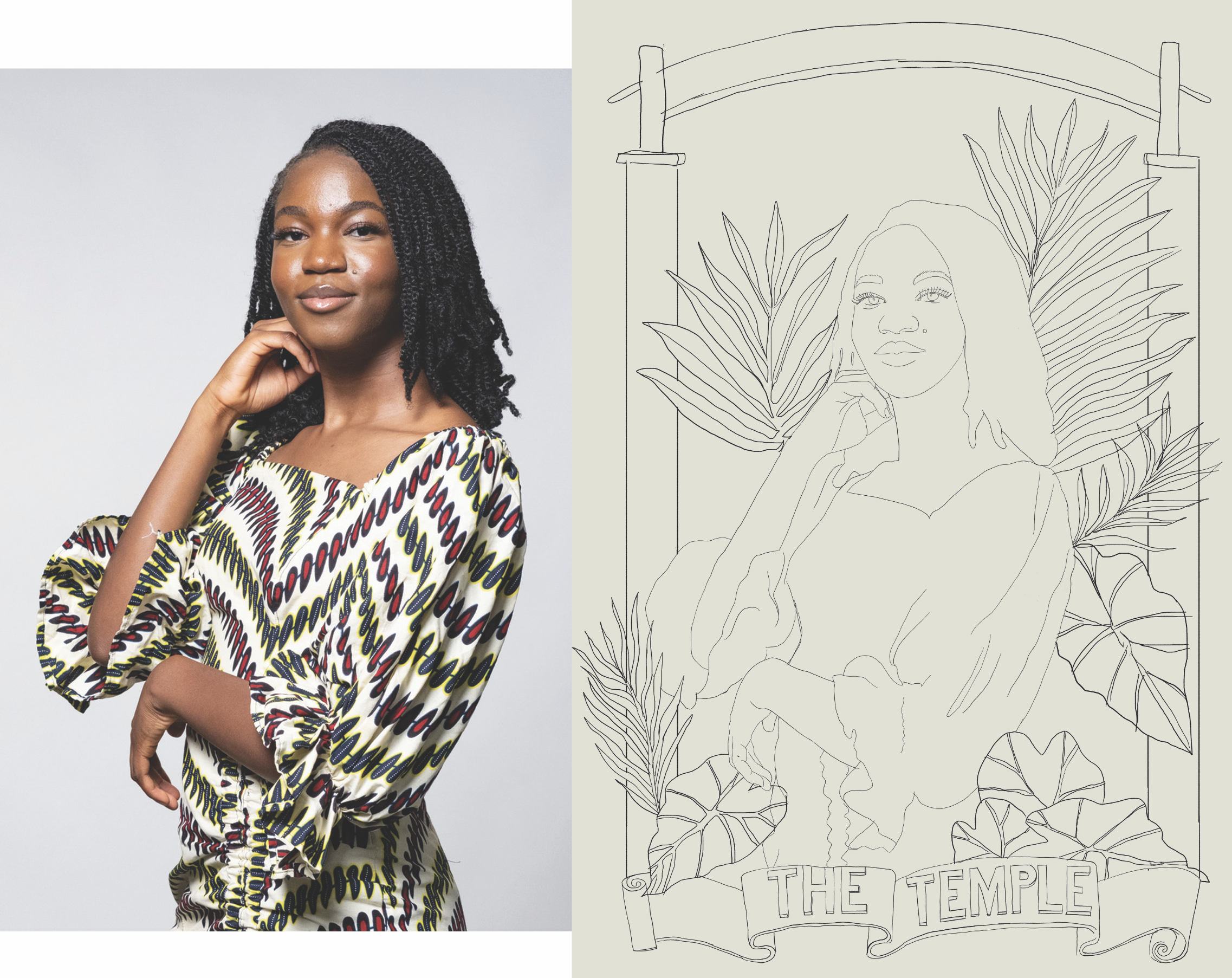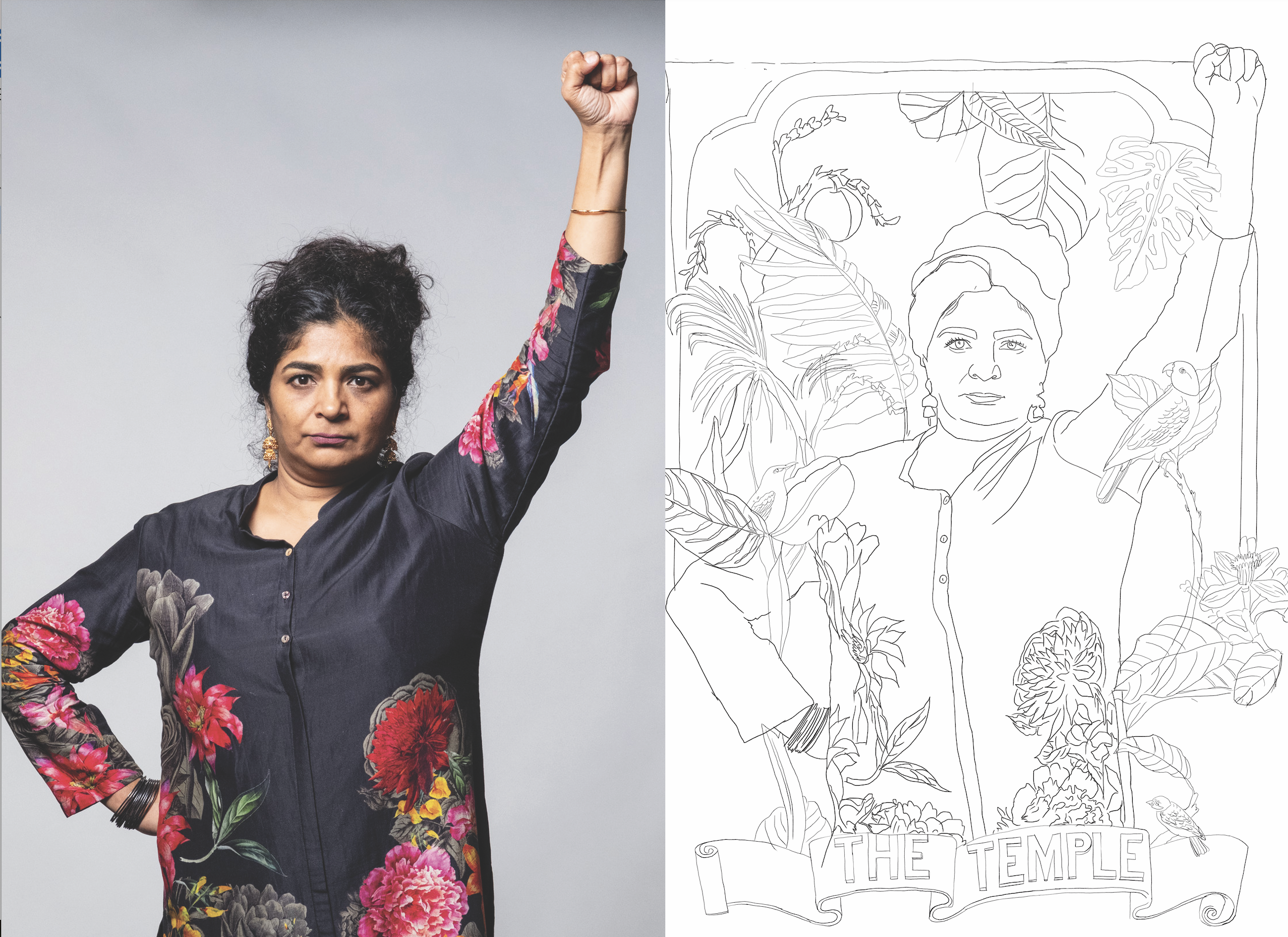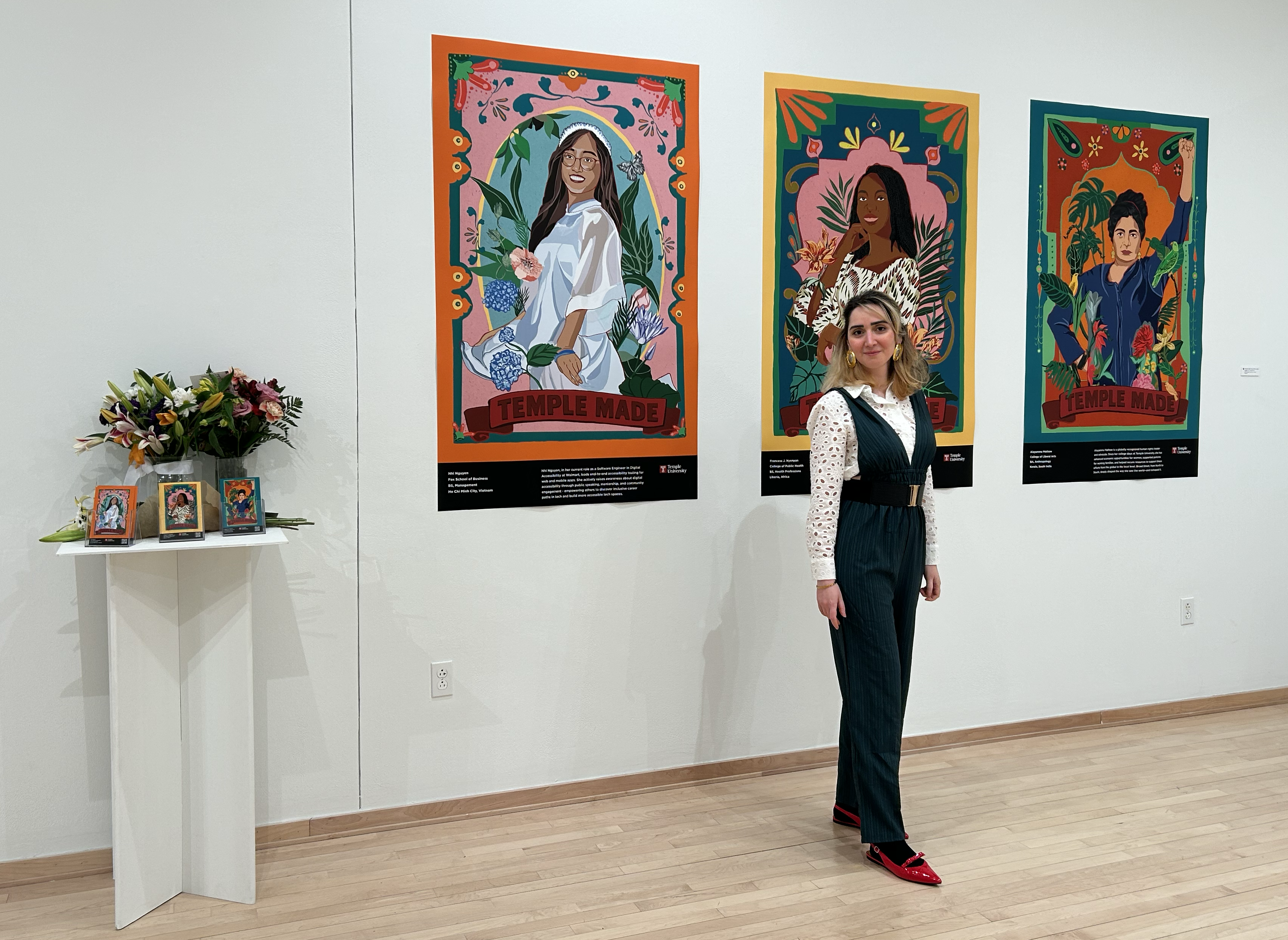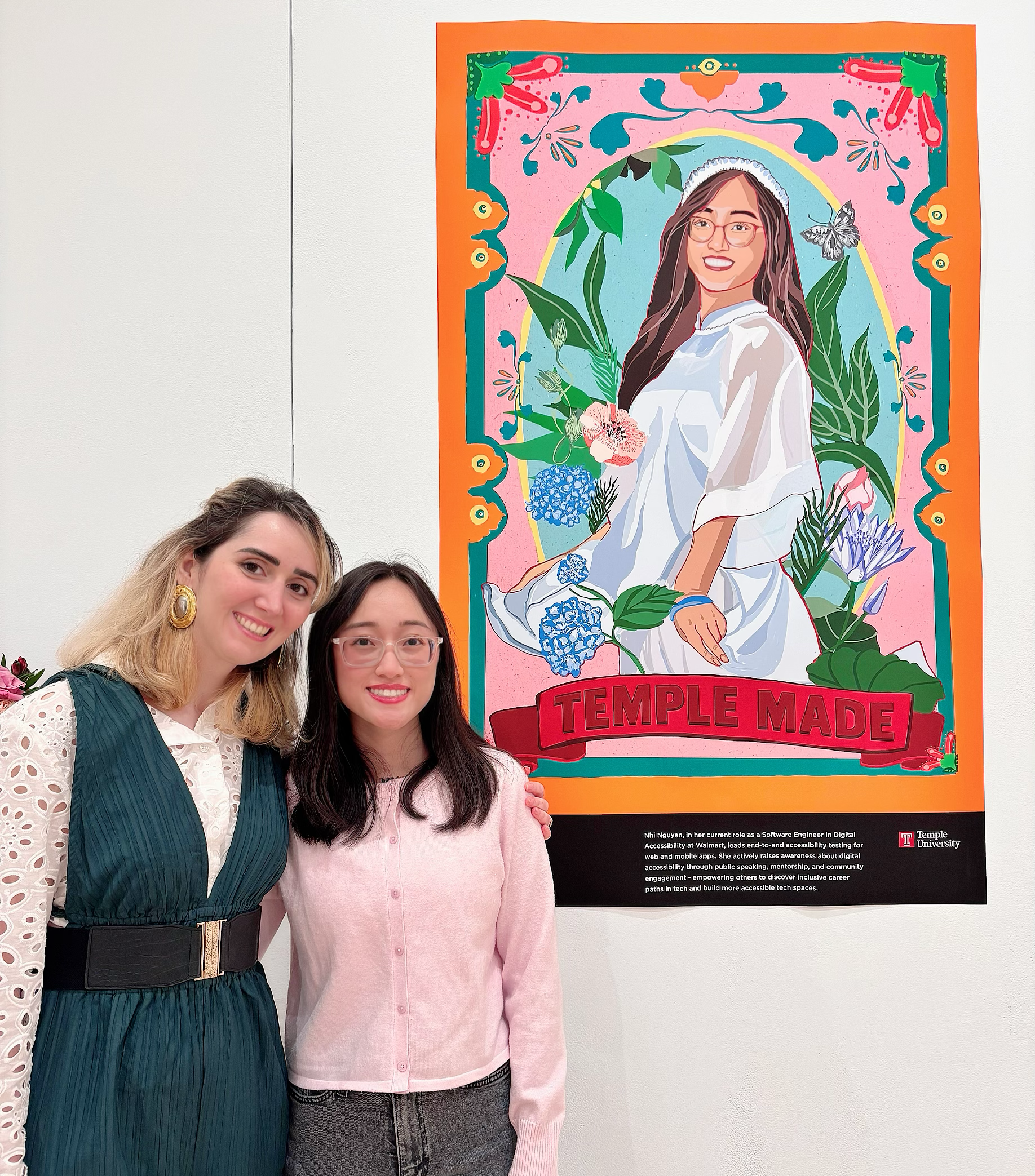Illustrating Identity: Portraits of Impact, Culture and #TempleMade Pride
Iranian-born graphic designer Dora Moghaddami, TYL ’25, recently showcased her work highlighting immigrant Temple alumnae making a difference. Drawing on her own journey, she uses illustration and storytelling to celebrate underrepresented voices and foster connection as an AAPI artist.
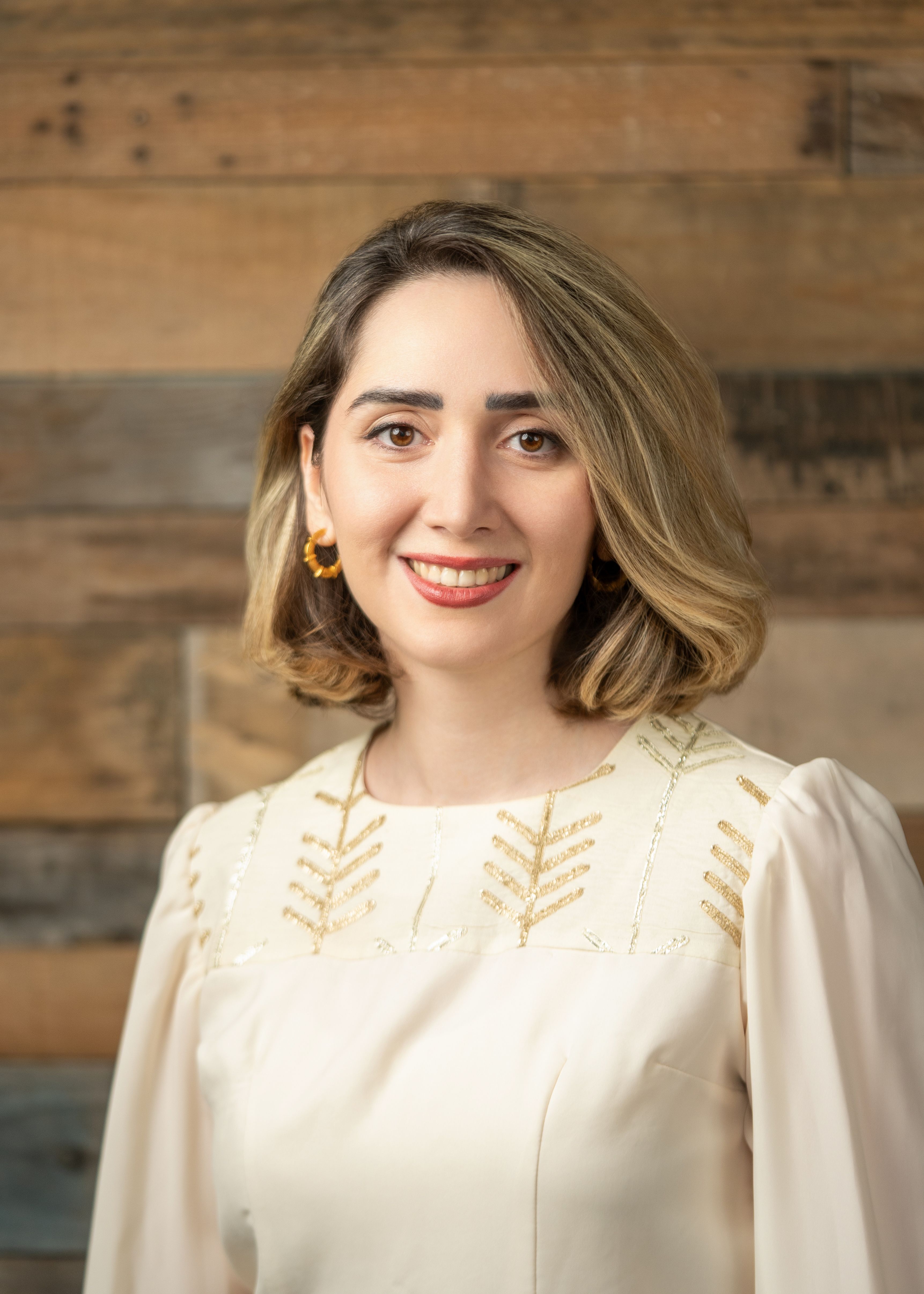
For Dora Moghaddami, TYL ’25, Temple Made isn’t just a slogan, it represents a legacy. A legacy that she was eager to showcase in her MFA exhibition at the Tyler School of Art and Architecture in April, a collaboration with two other MFA students in what they titled X, Y, Z. For Dora’s showcase, she wanted to highlight the stories of Temple alumnae who are immigrants, such as herself, and truly exhibiting what it means to be Temple Made in their communities: Alleyemma Mathew, Francess J. Nyenpan, CPH ’23, and Nhi Nguyen, FOX ’20. We spoke to Dora on why the project was so meaningful for her as an artist, and what she hopes people take away from it.
The following Q&A has been condensed for clarity and conciseness.
Dora's exhibit at the X, Y, Z showcase. Photographer: Neighboring States
Dora's exhibit at the X, Y, Z showcase. Photographer: Neighboring States
How does it feel to be all wrapped up with the semester and your showcase?
Great. I feel like I’ve learned and explored so much. I found a lovely community through Tyler and Temple University, and I’ve grown a lot—personally and professionally. I’m very grateful for that.
Tell us about yourself, and why you decided to choose Temple in 2023 to get your MFA.
So, I’m a graphic designer originally from Tehran, Iran. About five years ago, during the pandemic, I was working as a motion graphic designer for news agencies. The pandemic really changed everything—not just for me, but for everyone. I saw how quickly life can change, and I realized I had been putting off my dream of studying in the U.S. So, I quit my job in 2020 and started preparing to apply to graduate programs. I researched art schools across the U.S., and when I came across the Tyler School of Art, I reached out to some of the faculty. They were encouraging and supportive, and after sharing my portfolio with them, I decided to apply. That’s where the journey began.
Now that you’ve graduated, do you plan to stay here or eventually return to Tehran?
I’d really love to stay and explore more. There’s so much here to experience and learn from.
Sketches of the three alumnae subjects of Dora's exhibit.
Sketches of the three alumnae subjects of Dora's exhibit.
Let’s talk about the MFA showcase at Tyler. It's called X, Y, Z, right? Can you explain what the exhibit is about before we dive into your individual project?
X, Y, Z was a collaborative effort between the three of us graduating from the MFA program. We each had different perspectives and journeys, but the name “X, Y, Z” symbolized the conclusion of our time here—like the end of a sequence. It represents how our paths intersected at this final moment, where we brought together everything we’d worked on over the past two years.
Your project focused on three Temple alumnae who immigrated to the U.S. and are making an impact in their communities. What inspired that theme?
It began in one of my classes, Graduate Project, which was designed to prepare us for our careers. In the second semester, I was thinking about how to develop my illustration skills. I’ve always been drawn to storytelling, culture and themes related to feminism and immigrant experiences—especially as an immigrant woman myself. Initially, I was interested in highlighting unsung heroes in Philadelphia. But after a conversation with my instructor, Bryan Satalino, he suggested focusing on Temple alumni instead. That really resonated with me. I decided to narrow it further and focus on immigrant women alumni, whose stories reflect resilience and impact—something I personally relate to.
Dora with her artwork at the X, Y, Z exhibit.
Dora with her artwork at the X, Y, Z exhibit.
That’s powerful. What was it like learning about these women and translating their stories into art?
It was very much like a documentary process. I didn’t just illustrate their photos. First, I reached out to Alumni Relations, and they helped me get in touch with potential participants, and from there we selected five to eight to reach out to. Eventually, three agreed to participate. From summer 2024 onward, I conducted interviews and explained the project. We did professional photo shoots with each alum, where I asked them to bring cultural items or wear traditional dress that reflected their identity.
After the shoots, I reviewed my notes, sketches and interviews. I asked each woman about her favorite flowers, colors, icons and motifs from her culture. I wanted the final illustrations to be more than portraits—they needed to tell a story. With feedback from my instructor and classmates, I worked for about three months to refine the illustrations. The result, I believe, really captured their essence. And the best part was, two of the three women were able to come to my exhibition. They really connected with their portraits, and that meant everything to me.
Dora with Nhi Nguyen, FOX ’20, who was one of the alumna subjects of the showcase.
Dora with Nhi Nguyen, FOX ’20, who was one of the alumna subjects of the showcase.
What kind of response did you get from the public? What do you hope people take away from this exhibit?
The response was overwhelmingly positive. Many people said they’d love to see the portraits displayed more publicly—maybe as large banners on campus or in a public exhibition—so more people could learn about these alumni. That kind of feedback made me feel like the project had a real impact. I also hope this project inspires future students to explore similar themes. Maybe the next version could highlight queer alumni, first-generation students, or Black and Latin alumni. I titled the series Temple Made—but to me, that’s not just a slogan. It represents a legacy. These are women who lead, create and uplift their communities, and I’m honored to be part of that narrative.
That’s beautifully said. I love how you’ve redefined what “Temple Made” means through your work. So, what’s next for you? You mentioned wanting to stay in Philly—any plans for the summer?
This project confirmed that I want to continue working at the intersection of design, identity and community impact—through branding, editorial design, motion graphics and storytelling. Now that I’ve graduated, I’m actively looking for job opportunities that align with those goals.
I’d also love to take a moment to thank those who made this possible: Katie Sampson from Alumni Relations for her generous guidance and coordination, Joe Labolito for his beautiful and thoughtful photography, and the incredible SM+C team, especially Emily Zargan, who helped connect me with Joe and supported me throughout this process. I’m also truly grateful to Professor Bryan Satalino, whose mentorship guided this work from the beginning, and to everyone at Tyler and Temple who encouraged and supported me through every step — and officially made me Temple Made.

